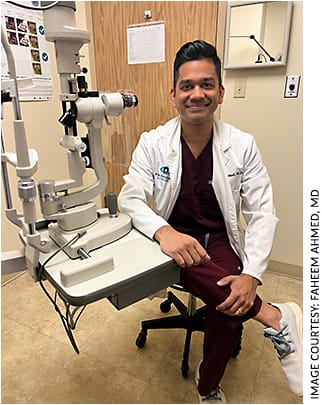How evaluating staff and processes increased patient satisfaction and helped grow my practice
In 2017, when I completed my residency at Wills Eye Hospital in Philadelphia, I was offered the opportunity to take over an established practice near my home in northern Virginia. I joined Eye Physicians of Virginia just as the founding physician was winding down his career. He had established a wonderful practice that had been serving the community for more than 30 years and had gained a great reputation under his stewardship.
When I took over the practice, I had to quickly get up to speed on the business aspect of medicine. Because the founder had been anticipating retirement, he had put off some major expenses, like replacing equipment, so I needed to come up with a plan.
Rather than immediately replacing $200,000 worth of equipment, I decided that this could be done incrementally if we first concentrated on improving the patient experience, from the moment they first call in to the end of their visit. By investing in our staff, I expected that we would increase patient satisfaction, have better patient outcomes and see the practice grow — and that’s exactly what happened.
What follows are the steps that we took that helped us get there.

Faheem Ahmed, MD, at the Reston, Va., office.
1. GET EVERYONE ON BOARD
A critical first step was surrounding myself with others who shared my vision of modernizing the patient experience. When I became a partner in 2018, I brought in a glaucoma specialist, Dr. Andrew Siegel, as a new associate. Dr. Siegel and I have been friends since our intern year at Einstein Medical Center, and he became my partner when the founder retired in late 2020. It was an ideal situation to discuss ideas with a partner who shared my vision for the practice.
We were also fortunate to have a skilled practice manager who had been with the practice for more than 12 years. Both he and another longtime administrative manager agreed with our vision almost immediately, as did most of the other staff.

The staff at Eye Physicians of Virginia’s three office locations in Mclean Reston, Mclean and Annandale, pose for International Women’s Day.
2. EVALUATE EVERYTHING
We started by evaluating all our processes for handling patients: how we greet them, where they sit, how the technician takes them back for diagnostic testing and how we create a comprehensive plan for treatment.
Patients are often anxious when visiting our practices — they could be dealing with anything from dry eye to progressive blindness. While we wanted appointments to move quickly, it was important that patients felt respected and received the information that they needed to make informed decisions.
The changing of our company culture started with how employees interacted with patients — we wanted new patients to feel welcome and make existing patients feel like they were part of our family. To help with this messaging, we created a simple script for answering phone calls and encouraged technicians and receptionists to take time to politely greet patients, ask them how they were doing and listen attentively to those who wanted to talk. We also held morning meetings to review these procedures, and they quickly became second nature.
3. MAKE INCREMENTAL UPGRADES
There was no way to avoid some major expenses when I took over the practice — some of the original slit lamp microscopes were so old that they could be put in a museum! But a huge capital outlay does not have to be made all at once. My first purchase was a $40,000 optical biometer, which replaced a 10-year-old machine. This enabled us to provide more options for our patients — such as premium IOLs — and give them better refractive results using femtosecond-assisted cataract surgery.
CONCLUSION
By increasing patient satisfaction, the practice saw a spike in revenue, which we have reinvested back into the practice. We’ve updated an exam lane about every 3 months and refurbished and updated the appearance of our reception areas in all three of our locations. These changes enabled us to hold on to our good employees and our established patients — as well as attract many new patients — even through the worst of the COVID pandemic.
Yes, new equipment is important, but surrounding yourself with good people and investing in them to create a friendly, welcoming culture will set your practice on the path for lasting success. OM
To share your story for an upcoming Lessons Learned, email julie.greenbaum@pentavisionmedia.com









